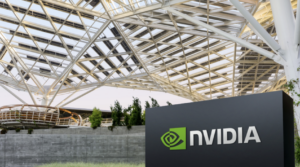Will Generative AI Deliver on Its Promise or Follow the Hype Cycle?
An in-depth exploration of the evolving landscape of Generative AI and its potential impact on the future.
The Enthusiasm and Skepticism Surrounding Generative AI
Generative AI has been at the forefront of technological discussions, driving significant investments and speculation. Over the past year, this new frontier has drawn comparisons to past technological revolutions. But as the hype has built, so too has the skepticism. Are we on the cusp of a groundbreaking innovation, or is this another cycle of unfulfilled promises?
In December 2022, OpenAI unveiled its groundbreaking large language model, ChatGPT, sparking immense excitement. Comparisons quickly emerged, likening this moment to the launch of pivotal technologies like the iPhone and cloud computing. But can Generative AI truly live up to such lofty expectations?
The Investment Frenzy and Its Critics
The financial stakes are astronomical. Tech giants and various industries are projected to invest close to $1 trillion in generative AI over the coming years, focusing on data centers, GPUs, and other AI infrastructures. Yet, despite these investments, substantial returns remain elusive. Critics argue that the lack of a transformative, cost-effective application, akin to the “killer apps” of past tech revolutions, is a major concern.

Lessons from Technological Cycles
History offers valuable lessons. The dot-com bubble, the rise of cloud computing, and the big data explosion all shaped the tech landscape profoundly. Each wave brought its own innovations, but not without pitfalls. For instance, the advent of Hadoop significantly influenced data management, but it eventually succumbed to its limitations. The industry’s fixation shifted towards AI shortly thereafter, reminiscent of past cycles of excitement and subsequent recalibration.
Challenges Facing Generative AI
Generative AI faces several formidable challenges. From data availability and quality to hardware constraints, the factors dampening the rapid progression of AI are multifaceted. According to MIT Professor Daron Acemoglu, only a fraction of tasks slated for automation will actually be automated in a cost-effective manner within the next decade, resulting in minimal productivity gains.

Nvidia, a significant player in AI hardware, enjoyed a remarkable 260% revenue growth, driven by demand for GPUs. Despite this, the soaring costs of training AI models act as economic barriers that could stymie broader adoption. As Jim Covello of Goldman Sachs notes, the GPUs required for AI are currently monopolized by Nvidia, putting competitors at a distinct disadvantage.
Powering the AI Revolution—But at What Cost?
The power demands of AI are monumental. AI currently consumes about 0.5% of the world’s energy, a figure expected to climb in the future. Meeting this growing demand necessitates substantial infrastructure development, an area where the US currently faces significant hurdles.

The Promise of Generative AI: A Future of Potential
Despite the numerous challenges, optimism remains. Proponents argue that Generative AI could revolutionize sectors like R&D, product innovation, and scientific discovery. Joseph Briggs from Goldman Sachs estimates a 9% increase in US productivity and a 6.1% boost in GDP over the next decade due to AI advancements. Meanwhile, researchers like Kash Rangan highlight the ongoing infrastructure phase, suggesting that the killer application will emerge in due time.
Generative AI’s journey is far from over. Its transformative potential is enormous, but the path to widespread, cost-effective adoption remains uncertain. As the technology matures, the next few years will be critical in determining whether Generative AI can fulfill its promise or if it will follow the path of past tech fads.
The Road Ahead
As we navigate through the hype and hurdles, the ultimate test for Generative AI will be its ability to integrate seamlessly into various industries and deliver tangible benefits. The technology’s success hinges on overcoming substantial barriers and proving its worth beyond efficiency gains in isolated applications like coding.
What’s your take on the future of Generative AI? Do you believe it will revolutionize industries or will it fall short of its lofty expectations? Share your thoughts in the comments below and join the discussion!
